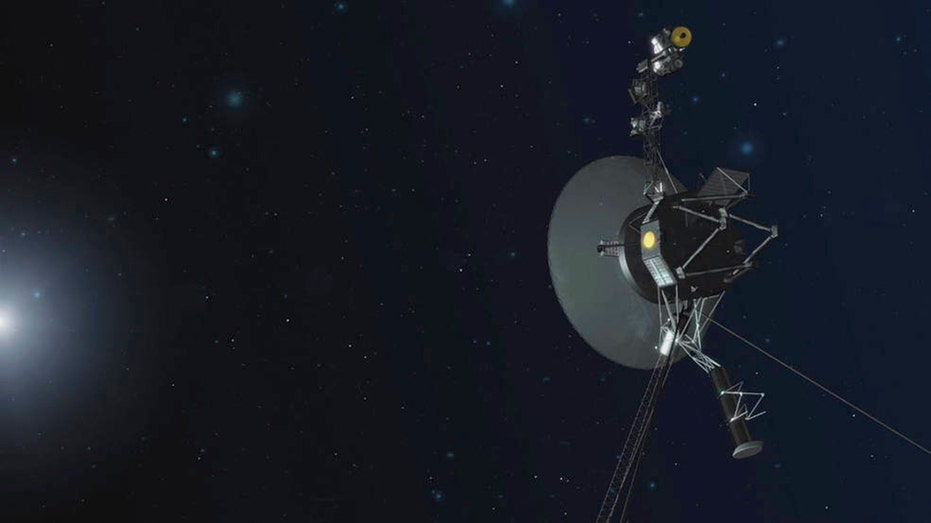
NASA reconnected with Voyager 1, which is located nearly 15 billion miles away from Earth, after a brief pause that triggered the spacecraft’s fault protection system.
After a brief pause in communications with Voyager 1, NASA re-established a connection with the interstellar spacecraft located more than 15 billion miles away from Earth, using a frequency not used more than forty years.
Communication between NASA and Voyager 1 has been spotty at times. In fact, the spacecraft stopped sending readable data to NASA’s Jet Propulsion Laboratory in Southern California on Nov. 14, 2023, and it was not until April that mission controllers began receiving commands once again.
More recently, the spacecraft turned off one of its two transmitters after what engineers suspected was due to Voyager 1’s fault protection system, which autonomously responds to onboard issues.
For instance, if the spacecraft uses too much power from its supply source, fault protection will kick in to conserve power by turning off non-essential systems, NASA explained.
VOYAGER 1 DETECTS ‘HUM’ WHILE IN INTERSTELLAR SPACE: REPORT
The space agency said the flight team sent a command to activate one of the spacecraft’s heaters on Oct. 16. The command takes nearly 23 hours to travel from Earth to the spacecraft, and then another 23 hours for the data to travel back.
Engineers suspected Voyager 1 should have had plenty of power to operate the heather, though the fault protection system was triggered.
On Oct. 18, the team learned about the issue, because the Deep Space Network was unable to detect Voyager 1’s signal. Communication between NASA and the spacecraft occurs on the X-band radio transmitter, named for the frequency it uses.
NASA PUBLISHES NEVER-BEFORE-SEEN PHOTOS OF ‘RAVIOLI’ MOON ORBITING SATURN
The fault protection system lowered the rate the transmitter was able to send data back to NASA, engineers determined, therefore changing the X-band signal the Deep Space Network needed to listen for.
Once the signal was located, Voyager 1 appeared to be in a stable state and the team began investigating what happened.
But on Oct. 19, communication between the team and Voyager 1 stopped again, this time entirely.
The team believed Voyager 1’s fault protection system was triggered two more times and switched to a second radio transmitter called the S-band, which uses less power.
NASA RE-ESTABLISHES COMMUNICATION WITH VOYAGER 1 INTERSTELLAR SPACECRAFT THAT WENT SILENT FOR MONTHS
Voyager 1 had not used the S-band to communicate with Earth since 1981.
Engineers with the Deep Space Network were ultimately able to detect the spacecraft’s communication from the S-band. Rather than risk turning the X-band back on before finding out what caused the fault protection system to trigger, the team sent a command on Oct. 22 to confirm the S-band transmitter was working.
Now, the team is working to gather information to help them find out what happened so it can return Voyager 1 back to normal operations.
Voyager 1′s odyssey began in 1977 when the spacecraft and its twin, Voyager 2, were launched on a tour of the gas giant planets of the solar system.
After beaming back dazzling postcard views of Jupiter’s giant red spot and Saturn’s shimmering rings, Voyager 2 hopscotched to Uranus and Neptune. Meanwhile, Voyager 1 used Saturn as a gravitational slingshot to power itself past Pluto.